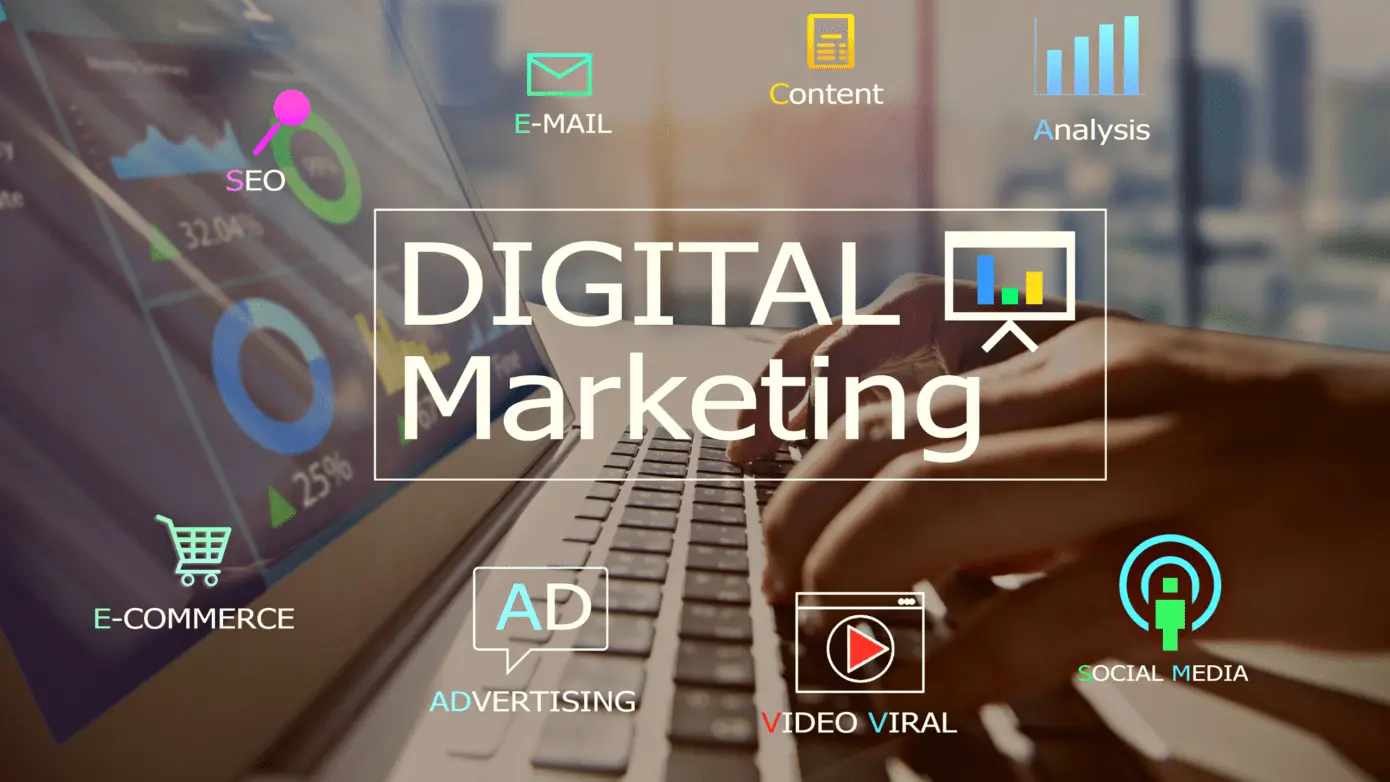Introduction
Digital marketing is an important part of any business’s marketing strategy. But how do you know if it’s worth it? What are the benefits of calculating digital marketing ROI? And how do you improve digital marketing ROI if you want to see better results? In this article, we answer all of these questions and more. We also provide tips on how to calculate digital marketing ROI and improve your digital marketing efforts. So, whether you’re just getting started with digital marketing, or you want to see better results, read on!
What is Digital Marketing ROI?
Digital marketing ROI is a metric that determines the return on investment (ROI) of digital media campaigns. It looks at both the short- and long-term impacts of your marketing efforts and compares them to your original goals.
The main factors that contribute to digital marketing ROI are lead generation, conversion rates, customer retention, and revenue growth. By understanding these outcomes and measuring them against your budgeted costs, you can determine whether or not your investments are providing a positive return on investment.
There are several different methods for calculating digital marketing ROI, but the most common approach is the cost per acquisition (CPA). This calculation measures how much it costs you to acquire a new visitor or Customer ID (CID), compared to the value generated by that CID over time. Another popular measure is net promoter score (NPS), which gauges customer satisfaction based on responses from respondents who have bought something from you in the past.
Once you’ve calculated your digital marketing ROI, make sure to track changes over time so you can see which strategies are producing the best results!
How to Calculate Digital Marketing ROI
There’s no question that digital marketing can be extremely effective when it’s done correctly. However, calculating the return on investment (ROI) for your efforts can be a bit difficult. That’s why it’s important to have a solid strategy in place before you start spending money on digital marketing campaigns.
Here are four tips to help you calculate your ROI:
- Measure Results vs. Goals: Before you launch any digital marketing campaign, make sure you understand what goals you want to achieve. Then measure how well your campaigns are achieving those goals. This will give you valuable information about which campaigns are most successful and where further improvements can be made.
- Track Data Collected throughout Your Campaigns: Once your campaigns have started running, track data such as clicks through website pages or conversions from adverts viewed online. This data will help you identify which ads perform best and where the additional focus should be placed next time around.
- Consider Costs Associated with Digital Marketing Activities: Digitally advertising costs money – whether it’s hiring an outside firm to do the job or investing in tools like Google AdWords or Facebook Ads Manager yourself. Therefore, it is important to track both the financial and nonfinancial costs of each campaign so that accurate budgeting and allocation of resources can take place.
- Evaluate Return on Investment Over Time: After tracking data for a few months or even years, evaluating how much revenue has been generated relative to the amount of expenditure incurred is essential
What are the Benefits of Calculating Digital Marketing ROI?
There are several benefits to calculating digital marketing ROI. Primarily, this information can help you track and evaluate your progress over time so that you can better understand how your online efforts are contributing to success. Additionally, knowing the return on investment (ROI) for your digital marketing initiatives can influence future decisions regarding funding and effort.
Here are some key reasons why calculating digital marketing ROI is important:
- It allows you to measure the impact of your campaigns objectively. Without accurate data, it’s difficult to make informed decisions about whether or not to continue investing in targeted content, social media advertising, or other forms of outreach.
- You can more accurately assess which channels are most effective for reaching specific demographics or driving traffic toward specific landing pages. This knowledge may lead you to change tactics if results indicate that one channel is performing poorer than expected relative to others.
- Understanding the financial implications of certain choices can also help decide when it makes sense strategically fund further development projects or pivot away from unprofitable endeavors altogether. It’s important not only to know how much money has been spent on various campaigns up until this point but also what returns have been realized – both in terms of objectives achieved as well as monetary savings accrued throughout the process!
All of these benefits depend on the accurate calculation of digital marketing ROI. However, there are a few common methods that businesses use to calculate their digital marketing ROI. The most popular method is known as net present value (NPV), which calculates the long-term return on investment (ROI) over one or more periods. Other common methods include internal rate of return (IRR) and payback period.
Once you have determined the appropriate methodology for calculating your digital marketing ROI, getting started is easy! Simply plug in pertinent data values into the software program(s) that offer this functionality and let them do their thing – magic will happen!
How to Improve Digital Marketing ROI
Improving digital marketing ROI is essential for any business that wants to see significant growth. Achieving this goal requires understanding how your marketing efforts are contributing to sales outcomes and making adjustments where necessary. Here are a few tips on how to improve digital marketing ROI:
- Measure the impact of your campaigns objectively. Use well-designed tracking tools to measure key performance indicators (KPIs), such as website clicks or leads generated. This information can help you track the effectiveness of your campaigns and make informed decisions about which ones to continue or expand next time around.
- Utilize insights from user data collected through surveys or interviews to improve the design and messaging strategies. By understanding what resonates with potential customers, you can create content that is more likely to be shared and seen as valuable by people who might be interested in hearing it.
- Analyze results using effective analytics tools so that you can identify areas where improvements could be made across all aspects of your business operation. With this knowledge at hand, you can take steps toward improving conversions, increasing sales volume, and boosting overall profitability.
By taking these steps – measuring performance metrics, analyzing data streams, and conducting experimentation – you’ll be able to Optimize digital marketing ROI and drive more revenue through effective digital marketing campaigns and strategies!
Tips on How to Improve Your Digital Marketing ROI
Digital marketing is an important part of any business strategy, but it’s often difficult to determine whether the investment is worth it. Luckily, there are several ways to improve your digital marketing ROI. Here are four tips:
- Measure your results carefully. Every piece of content you create should have a goal or purpose, and you should track which sections of the population are engaging with it most effectively. This information will help you identify which topics and campaigns work best for your business, and how to further optimize them for maximum impact.
- Use data-driven insights to make informed decisions about your budget and resource allocation. Using sophisticated analytics tools can help you understand why certain pieces of content are performing better than others, as well as where money could be saved on overall campaign costs (or spent on more effective strategies).
- Plan strategically – creating long-term vision & goals ensures that every project benefits from consistent strategy development over time (rather than haphazard decision-making). This leads to higher quality outcomes across all channels, including online advertising, social media posts/statuses/links, etc., website traffic & conversion rates, etc., email engagement, etc., and even customer loyalty programs!
- Be flexible – always strive for improvement by adapting tactics & strategies as needed in order not only to meet desired results but also to evolve along with industry trends/changes!
- Set Clear ROI Goals – If you’re not sure whether the digital marketing measures you’re taking are resulting in an ROI, it can be helpful to set specific goals for improvement. For example, if your goal is to increase website traffic by 10 percent, then set a timeline for achieving this target (e.g., within six months) will help keep things accountable and motivated.
- Avoiding Overvalued Metrics – Though it’s tempting to track a variety of quantitative metrics to “monitor success,” be wary of tracking too many unrelated or overvalued measures. For example, vanity metrics such as social media followers or website visitor numbers can be less meaningful and counterproductive if they aren’t correlated with business outcomes. Some studies have shown that companies with high follower counts on Twitter are more likely to go bankrupt than companies without Twitter accounts at all! Similarly, focusing exclusively on website traffic (without considering other important factors like conversion rates) may not provide the most useful information for your business. Instead, try to track key performance indicators that are both indicative of success and directly impact your bottom line (e.g., website visits/unique visitors, search engine optimization rankings).
- Regularly Evaluating Digital Marketing ROI To ensure that your digital marketing efforts are achieving the desired results, it’s important to periodically evaluate the ROI of each campaign or measure in question. This can be done using a variety of tools (e.g., online calculators or analytics software), though keep in mind that some metrics may be more meaningful than others – for example, email open rates might be more important than total clicks. To ensure that your efforts are effective and efficient, it’s also recommended to regularly revisit your Digital Marketing Strategy and make necessary tweaks as needed.
- Marketing Automation – Marketing Automation allows you to run and manage your marketing campaigns automatically. This can include tasks such as email sending, creating and managing trackable landing pages, scheduling social media posts, setting up automated call center scripts, and much more. Marketing automation makes it possible for you to work on multiple campaigns at the same time without having to constantly switch between screens or windows.
- There are a variety of different marketing automation tools available; however, there is no definitive “right” tool for every business size or budget. It’s important to choose a tool that fits your needs specifically (e.g., features, pricing, automation capabilities) and that you are comfortable using.
- SEO Marketing ROI: SEO Marketing is often viewed as an expensive investment with a low return on investment (ROI). While this may be true for some businesses, there are several cost-effective ways to improve your SEO ranking without breaking the bank. One such way is through paid search marketing (PSM), which can be extremely effective in driving clicks and conversions from potential leads. In addition to paid search traffic generation, another popular method for improving SEO ranking is through social media campaigns – when executed.
- Predictive Modelling – Predictive modeling is a type of machine learning that uses historical data to make predictions about future events. This can be used in areas such as marketing, sales, and operations. By using predictive modeling tools, businesses can improve their decision-making by predicting how customers will behave based on past behavior. In addition to improving decision-making processes, predictive modeling also has the potential to save time and money by preventing adverse outcomes from happening before they occur.
- Identify Opportunities and Act on them – There is no one-size-fits-all answer to this question – the key is to understand your business and what opportunities can be exploited to improve ROI. For example, if you are a small business that specializes in selling products online, there may be opportunities to develop partnerships with other businesses that also sell products online. By working together, you could create sales synergy and improve ROI by sharing resources (e.g., marketing budget) and joint targeting of customers.
Conclusion
Okay! We hope that this article not only answered your confusion but also showed you how crucial it is to calculate the right digital marketing ROI. It will help you identify where and how much investment is required for your brand.
Not only that, but it will also tell whether or not the investment paid off or if there was a need to redesign some part of your strategy. After all, to improve digital marketing ROI, more effort should be put into research and analysis rather than just relying on gut feelings and assumptions. So far, we found out that a data-driven approach usually works best for many brands when it comes time to determine their next steps.




Leave a Reply